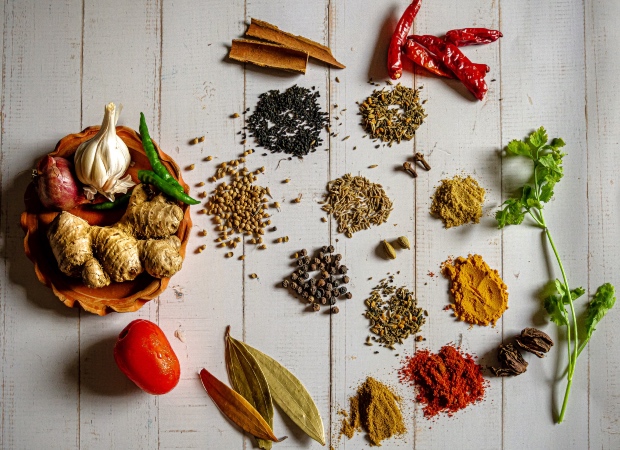Over the past few years, Eastern traditions and culture have become all the rage in Western society and Ayurveda is no exception as many people across the globe adopt its principles. Here are all the basics that you need to know about Ayurveda and its approach to both cooking and food.
What is Ayurveda?
Often referred to as the Mother of All Healing, the Sanskrit word “Ayurveda” directly translates to “the science of life”.
The Art of Living, an international NGO with a presence in South Africa, defines Ayurveda as a natural and holistic medicine system.
When compared to modern medicine and science, instead of focusing on the management of a disease or illness, Ayurveda focuses on the prevention and possible elimination of illnesses or diseases.
The origins of Ayurveda
According to the Ayurvedic Institute, an organisation dedicated to the practice and teaching of Ayurvedic medicine and ancient Indian therapies, Ayurveda originated in India over 5,000 years ago and is rooted within Vedic culture.
Michele Mistry, a certified Ayurvedic nutrition specialist and founder and owner of a local brand, INDIKAAP Vegan Ayurveda, shares that the origins of the practice and concept were passed down orally through generations.
“Ayurvedic traditions and concepts have been traced back to the Vedas, which are ancient Indian mantras that were memorised and passed down between spiritual ascetics. Charak and Sushrata were two scholars who created the first written texts known as the Charaka Samhita and the Sushrita Samhita respectively. The compilation of these two texts was called the Ashtanga Hridyam.”
The principles of Ayurveda
With a holistic and natural approach to not only healing but life in general, the principles of Ayurveda are based on three key concepts that all relate to the basic biology of the human body.
Michele outlines the three universal principles of Ayurveda.
“There are three universal principles that are present in all that exists. These are Sattwa, Rajas and Tamas. Sattwa is purity, right action and spiritual purpose; Rajas is movement, change and transformation; and Tamas is inertia, confusion, decay and death. From these come the elements of Ether, Air, Fire, Water and Earth. Everything we are and experience has the five elements and the universal principles present.”
Within its foundational roots, Ayurveda is rooted in balancing the three principle energies of the body.
A paper written by Vasant Lad, an Ayurvedic physician and the founder of the Ayurvedic Institute, outlines these three principle energies as Vata, Pitta and Kapha.
“Energy is required to create movement so that fluids and nutrients get to the cells, enabling the body to function. Energy is also required to metabolise the nutrients in the cells, and is called for to lubricate and maintain the structure of the cell. Vata is the energy of movement; Pitta is the energy of digestion or metabolism; and Kapha, the energy of lubrication and structure. All people have the qualities of Vata, Pitta and Kapha, but one is usually primary, one secondary, and the third is usually least prominent. The cause of disease in Ayurveda is viewed as a lack of proper cellular function due to an excess or deficiency of Vata, Pitta or Kapha. Disease can also be caused by the presence of toxins.”
Michele adds that Ayurveda does not simply look at the surface but has a deeper approach to treating illnesses and in addressing one’s overall wellbeing. “Nothing is seen in isolation. A practitioner would not focus on the symptoms of the illness alone, but on all aspects of life, like nutrition, lifestyle, stage of life etc.”
Ayurvedic cooking
The principles of Ayurveda are echoed through its approach to food and cooking practices as outlined by Michele.
“Ayurvedic cooking uses the knowledge of the three universal principles and how the human body and mind are affected by them. Using the appropriate qualities and quantities of foods, we create food that heals, rejuvenates and transforms. Ayurvedic food is medicinal and intentional, and feeds more than our desire for taste. That said, it can be incredibly delicious, too.”
Unlike other practices, Ayurveda believes that each person’s body and digestion is unique and, as such, there is not a rigid approach to cooking or food.
Contrary to popular belief, not all Ayurvedic foods are Indian, vegan or vegetarian as Michele points out. “Ayurveda uses food to medicate as needed by the client.”
Some popular Ayurvedic dishes include kitchari and conjee. Both of these dishes are rice soups and are used during an Ayurvedic cleanse.
Each principle energy relates to a specific approach to food and diet – a detailed explanation of this can be found here.
The benefits of Ayurvedic cooking
There are multiple benefits to utilising Ayurvedic principles in our cooking methods and diets as it approaches wellbeing with an internal focus.
“We can regulate our own health, our wellbeing, our mood, our energy levels, our libido, our enthusiasm, our anger, our drive and our joy by adjusting what we ingest, how we prepare it and when we eat it. It is revolutionary as it puts our health and wellbeing where it should be – in our own control,” concludes Michele.

